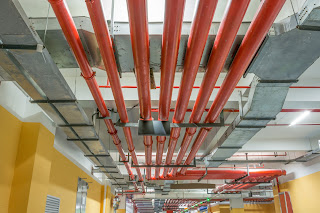The Evolution of Fire Fighting Pipes: From Traditional to Modern Solutions
Firefighting has always been a critical aspect of safeguarding communities against the devastating effects of fires. Throughout history, the tools and techniques used for firefighting have evolved significantly, with one crucial element being the pipes utilized to deliver water to extinguish flames. In this blog, we'll explore the evolution of firefighting pipes from traditional methods to modern solutions, highlighting the advancements that have enhanced firefighting efficiency and effectiveness.
Traditional Firefighting Pipes:
In ancient times, combating fires often involved primitive methods such as buckets or animal-skin containers to carry water. As societies advanced, the use of rudimentary pipes made from materials like wood or bamboo emerged. These early pipes lacked durability and efficiency but represented the initial step towards organized firefighting efforts.
Cast Iron Pipes:
During the industrial revolution, advancements in metallurgy led to the adoption of cast iron pipes for firefighting purposes. Cast iron pipes offered improved durability and could withstand higher water pressures, allowing firefighters to tackle fires more effectively. These pipes formed the backbone of municipal water distribution systems and remained in use for many decades.
Steel Pipes and Hydrants:
As technology progressed, steel emerged as a superior material for firefighting pipes due to its strength and resistance to corrosion. Steel pipes enabled the construction of larger diameter pipelines, facilitating the delivery of greater volumes of water to fire scenes. Additionally, the introduction of fire hydrants connected to these pipelines revolutionized firefighting by providing quick access to water sources in urban areas.
Modern Polymer Pipes:
In recent years, the development of high-performance polymers has revolutionized firefighting pipe technology. Advanced materials such as high-density polyethylene (HDPE) offer numerous advantages over traditional metal pipes, including lightweight construction, flexibility, and resistance to corrosion and abrasion. These qualities make polymer pipes ideal for various firefighting applications, ranging from municipal water distribution networks to portable firefighting systems.
Composite Pipes and Innovation:
Innovations in composite materials have further expanded the capabilities of firefighting pipes. Composite pipes, combining materials like fiberglass with resin matrices, offer the benefits of both strength and corrosion resistance. Moreover, these pipes can be designed with specific properties tailored to firefighting requirements, such as increased flexibility or reduced weight.
Smart Pipe Technologies:
The integration of smart technologies into firefighting pipes represents the latest frontier in fire suppression innovation. Smart pipes equipped with sensors and communication capabilities can provide real-time data on water flow rates, pressure levels, and pipe integrity. This data allows firefighters to make informed decisions and optimize their firefighting strategies, enhancing overall effectiveness and safety.
Conclusion:
The evolution of firefighting pipes from traditional materials to modern solutions reflects the ongoing quest for improved efficiency, durability, and safety in fire suppression efforts. From ancient wooden pipes to advanced polymer and composite materials, each innovation has contributed to enhancing the capabilities of firefighters worldwide. As technology continues to advance, the future holds even greater possibilities for revolutionizing firefighting pipe systems, further strengthening our ability to protect lives and property from the ravages of fire.


.jpg)


Comments
Post a Comment